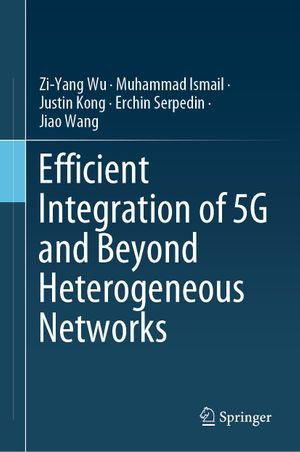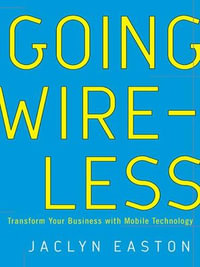
Efficient Integration of 5G and Beyond Heterogeneous Networks
By: Zi-Yang Wu, Muhammad Ismail, Justin Kong, Erchin Serpedin, Jiao Wang
eText | 26 August 2020
At a Glance
eText
$84.99
or
Instant online reading in your Booktopia eTextbook Library *
Read online on
Desktop
Tablet
Mobile
Not downloadable to your eReader or an app
Why choose an eTextbook?
Instant Access *
Purchase and read your book immediately
Read Aloud
Listen and follow along as Bookshelf reads to you
Study Tools
Built-in study tools like highlights and more
* eTextbooks are not downloadable to your eReader or an app and can be accessed via web browsers only. You must be connected to the internet and have no technical issues with your device or browser that could prevent the eTextbook from operating.
ISBN: 9789811569388
ISBN-10: 981156938X
Published: 26th August 2020
Format: ePUB
Language: English
Publisher: Springer Nature
You Can Find This eBook In
Non-FictionComputing & I.T.Computer Networking & CommunicationsComputer ScienceArtificial IntelligenceExpert Systems & Knowledge-Based SystemsReference, Information & Interdisciplinary SubjectsResearch & InformationInformation theoryCybernetics & Systems TheoryEngineering & TechnologyElectronics & Communications Engineering
This product is categorised by
- Non-FictionComputing & I.T.Computer Networking & Communications
- Non-FictionComputing & I.T.Computer ScienceArtificial IntelligenceExpert Systems & Knowledge-Based Systems
- Non-FictionReference, Information & Interdisciplinary SubjectsResearch & InformationInformation theoryCybernetics & Systems Theory
- Non-FictionEngineering & TechnologyElectronics & Communications EngineeringCommunications Engineering & TelecommunicationsWAP & Wireless Technology
- Non-FictionComputing & I.T.Computer ScienceArtificial IntelligenceMachine Learning
- Non-FictionEngineering & TechnologyElectronics & Communications EngineeringCommunications Engineering & TelecommunicationsTelephone TechnologyMobile Phone Technology
- Non-FictionSociology & AnthropologySociologySocial Research & Statistics
- Non-FictionComputing & I.T.Computer Hardware
- Non-FictionMathematicsProbability & Statistics
- Non-FictionLibrary & Info SciencesLibrary & Information Services























